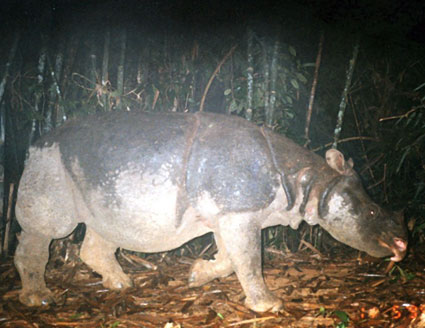
It is thought that the wild population has fallen by around 12% in the past four years. The white rhino is the most common of the five rhino species, although common is the wrong word. Wild population estimate: 15,942 and decreasing Here’s how all five rhino species are doing in 2023, thanks to the most recent analysis by the International Rhino Foundation (data published in September 2022). And both number fewer than 100 animals in global populations. The incredibly rare Javan and Sumatran rhinos live almost exclusively on their namesake islands. Black and white rhinos are native to east and southern Africa and the greater one-horned rhino lives in India and Nepal. And the return of travel after the COVID-19 pandemic should help the situation too! So, read on to find out more about how wild rhino populations are doing in 2023.įirstly, it’s important to know that there are actually five distinct rhino species. Luckily, there are many dedicated people and organizations working on rhino conservation. But rhinos also suffer desperately from the action of mankind. The rhino is an incredible creature and one that fuels travel around the world as people flock to catch a glimpse of this iconic species in national parks.

A member of the famous Big Five in Africa but unfortunately also targeted by poachers for its ivory horn. Thanks to these efforts, we have hope for Javan rhinos.It’s one of the world’s most iconic and recognizable animals. The program was successful in allowing a more secure food resource for the park’s rhinos.Īccording to the International Rhino Foundation: “The Government of Indonesia and Ujung Kulon National Park have remained steadfast in their commitment to saving the Javan Rhino from extinction. Although the plant occurs naturally in UKNP, it is fast-growing and chokes out other native plants including the favorite food plants of the rhinos. In 2011, the UKNP authorities launched the Arenga palm removal program that also had positive effects on the resident rhino population. The role of the Rhino Protection Units (RPUs) in guarding the world’s last Javan rhinos in UKNP is thus highly commendable. Over 20 years have passed without any poaching being reported at the park. The population in the park appears to have stabilized. At least one new calf has been counted every year since 2012. Four new rhino calves were reported in this count! A decade ago, the population of Javan rhinos in UKNP was only 50 but has grown gradually since then. The present count obtained through surveys conducted through the end of September exhibits an increase from 68 individuals reported in the last survey. On Friday, Indonesia’s Ministry of Environment and Forestry declared in an announcement that the population of Javan rhinos in UKNP had increased to 72 individuals. The population of Javan rhinos is, however, under strict monitoring as they survive only in the Ujung Kulon National Park (UKNP) on the island of Java, Indonesia. Hopefully, the program will give a more accurate picture of the Sumatran rhinos to allow conservation groups to save them in time. Results are believed to arrive in three years’ time.

In February, Indonesian authorities arranged an exercise for Sumatran rhino researchers to conduct an official count of the species in the country. The lack of knowledge makes it nearly impossible to monitor the trends in population of this rhino species. Some estimates even put the number as low as 30. It is estimated that there are fewer than 100 individuals of this species remaining in the wild, mostly in Indonesia, and around 8 in captivity. The number of remaining Sumatran rhinos in the wild is largely unknown as the population is severely fragmented. Iman was a female Sumatran rhino, about 25 years old, who was captured in 2014 and placed under extreme protection and care at the Borneo Rhino Sanctuary at Tabin Wildlife Reserve in Malaysia’s Sabah state.

Once widespread through most of Asia, these rhinos are today confined primarily to the eponymous Indonesian islands of Sumatra and Java. Habitat loss, degradation, and fragmentation, and poaching have severely decimated the populations of both these rhino species. The Sumatran rhinoceros (Dicerorhinus sumatrensis) and Javan rhinoceros (Rhinoceros sondaicus) are both critically endangered species. Sumatran Rhino Population Shrouded in Mystery But while the country is mourning, hope pours in from neighboring Indonesia where the population of Javan rhinos has risen to 72 individuals. On November 23, Iman, the last Sumatran rhino of Malaysia, died, making international headlines. Oishimaya Sen Nag, World Atlas | December 7, 2019


 0 kommentar(er)
0 kommentar(er)
